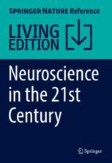Search
Search Results
-
The development of descending serotonergic modulation of the spinal nociceptive network: a life span perspective
AbstractThe nociceptive network, responsible for transmission of nociceptive signals that generate the pain experience, is not fully developed at...

-
Descending serotonergic modulation from rostral ventromedial medulla to spinal trigeminal nucleus is involved in experimental occlusal interference-induced chronic orofacial hyperalgesia
BackgroundDental treatment associated with unadaptable occlusal alteration can cause chronic primary myofascial orofacial pain. The serotonin (5-HT)...

-
Intracortical facilitation and inhibition in human primary motor cortex during motor skill acquisition
The primary motor cortex (M1) is critical for movement execution, but its role in motor skill acquisition remains elusive. Here, we examine the role...

-
Monoamine control of descending pain modulation after mild traumatic brain injury
Traumatic brain injury (TBI) is a significant public health concern, with the majority of injuries being mild. Many TBI victims experience chronic...

-
Strong and aversive cold processing and pain facilitation in fibromyalgia patients relates to augmented thermal grill illusion
The thermal grill illusion (TGI) is assumed to result from crosstalk between the thermoreceptive and nociceptive pathways. To elucidate this further,...

-
Systems Descending from the Brainstem: Basic Principles – Other Descending Pathways and Motor Control
Physiological studies of the pathways from the brain and midbrain to the spinal cord have a very long history, from Sherrington and other key...
-
Identification of neurodevelopmental transition patterns from infancy to early childhood and risk factors predicting descending transition
It is unclear whether neurodevelopmental progress from infancy to early childhood remains stable. Moreover, little is known about the risk factors,...

-
Systems Descending from the Brainstem: Basic Principles – Other Descending Pathways and Motor Control
Physiological studies of the pathways from the brain and midbrain to the spinal cord have a very long history, from Sherrington and other key...
-
Repeat mild traumatic brain injuries (RmTBI) modify nociception and disrupt orexinergic connectivity within the descending pain pathway
Repeat mild traumatic brain injuries (RmTBI) result in substantial burden to the public health system given their association with chronic...

-
Neurons in the caudal ventrolateral medulla mediate descending pain control
Supraspinal brain regions modify nociceptive signals in response to various stressors including stimuli that elevate pain thresholds. The medulla...

-
Short-term facilitation effects elicited by cortical priming through theta burst stimulation and functional electrical stimulation of upper-limb muscles
Non-invasive theta burst stimulation (TBS) can elicit facilitatory or inhibitory changes in the central nervous system when applied intermittently...

-
Peripersonal and reaching space differ: Evidence from their spatial extent and multisensory facilitation pattern
Peripersonal space (PPS) is a multisensory representation of the space near body parts facilitating interactions with the close environment. Studies...

-
The influence of long-term memory on working memory: Age-differences in proactive facilitation and interference
Prior learning can hinder subsequent memory, especially when there is conflict between old and new information. The ability to handle this proactive...

-
Social facilitation of alcohol subjective effects in adolescents: Associations with subsequent alcohol use
RationaleLaboratory research in adults indicates that alcohol-related subjective effects are enhanced under some social conditions. However, it is...

-
The 5-HT3 Receptor-Dependent Facilitatory Influence of the Infralimbic Cortex on the Caudal Ventrolateral Medulla Visceral Pain-Related Neurons and Its Colitis-Associated Changes in Rats
AbstractThe medial prefrontal cortex has been shown to participate in pain processing and to undergo structural and functional changes in chronic...

-
Participation of ipsilateral cortical descending influences in bimanual wrist movements in humans
There are contralateral and less studied ipsilateral (i), indirect cortical descending projections to motoneurons (MNs). We compared ipsilateral...

-
Intrinsic braking role of descending locus coeruleus noradrenergic neurons in acute and chronic itch in mice
Itch is defined as an unpleasant sensation that provokes a desire to scratch. Our understanding of neuronal circuits for itch information...

-
Basic Science: Pain Mechanisms and Pathways
Pain perception begins with nociceptors. Aδ and C fibers carry peripheral noxious stimuli to the central nervous system. First pain and second pain...
-
Descending inhibition selectively counteracts the capsaicin-induced facilitation of dorsal horn neurons activated by joint nociceptive afferents
Previous studies from our laboratory showed that in the anesthetized cat, the intradermal injection of capsaicin in the hindpaw facilitated the...

-
The Effect of Transcutaneous Electrical Spinal Cord Stimulation on the Functional Activity of Spinal Inhibition in the System of Synergistic Muscles of the Lower Leg in Humans
AbstractThe effect of 20-minute transcutaneous electrical spinal cord stimulation (tESCS) on the severity of nonreciprocal and recurrent inhibition...

